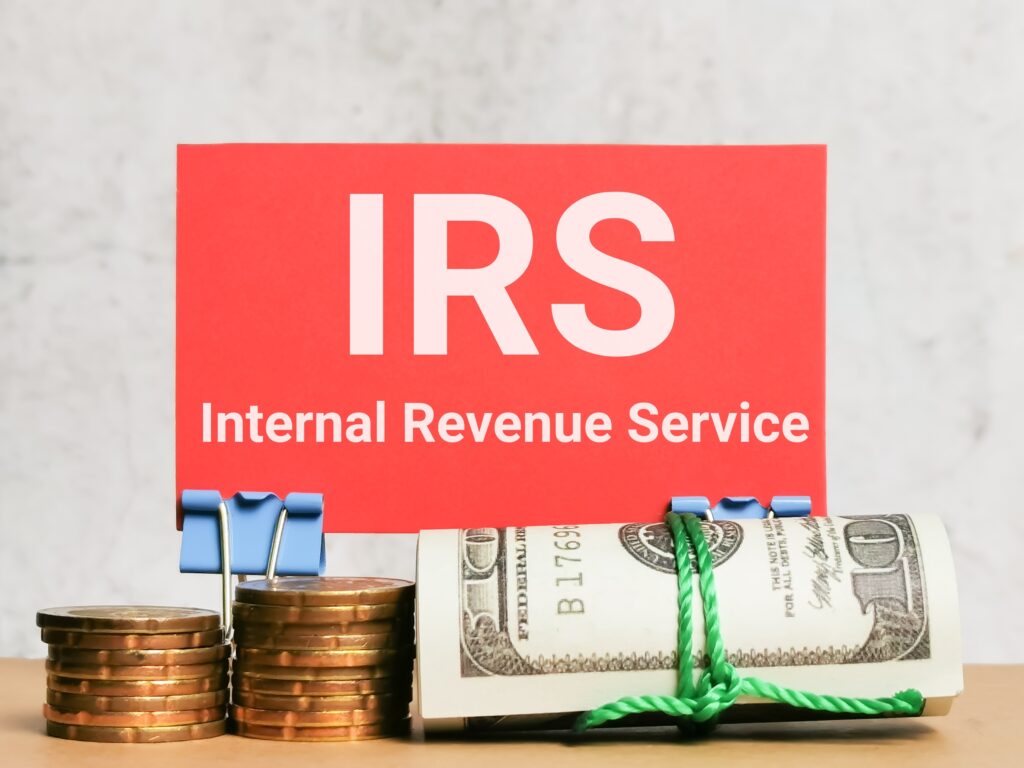Understanding the Differences: Form 4506 vs. Form 4506-T vs. Form 4506-C

The world of IRS documentation can be daunting, especially when dealing with various forms required for financial and legal processes. Among these, Forms 4506, 4506-T, and 4506-C are essential for obtaining different types of tax information from the IRS. Understanding the nuances and specific uses of each form is crucial for notary signing agents and their clients. This article will elucidate the differences between these forms, detailing their purposes, how to fill them out, and when to use each one.
Overview of Form 4506

Definition and Purpose
Form 4506, officially known as the Request for Copy of Tax Return, is used to request a copy of a previously filed tax return and all accompanying forms and schedules. This form is typically required in situations where a full copy of the tax return is necessary, such as during audits, legal proceedings, or when applying for a mortgage.
Situations Requiring Form 4506
Form 4506 is essential when a complete record of a taxpayer’s filed return is needed. This might include:
- Audits and legal disputes where detailed records are required.
- Mortgage applications where lenders need comprehensive financial documentation.
- Situations involving discrepancies or amendments to previously filed returns.
Instructions for Filling Out Form 4506
To fill out Form 4506, one must provide personal information including the name, Social Security number, and address used on the tax return. The form also requires the tax year for which the copy is requested and a signature. Here are the steps:
- Personal Information: Include your full name, Social Security number, and current address.
- Tax Year: Specify the year(s) for which you need the copies.
- Signature: Sign and date the form to validate the request.
- Fee Payment: Attach the required fee for each tax return copy requested.
Fees and Processing Time
A fee is associated with each tax return copy requested, currently set at $43 per return. Processing times can vary from a few weeks to several months, depending on the IRS workload and the specific request details.
Historical Context and Updates
Form 4506 has been a staple of IRS documentation for many years. It was introduced several decades ago, with the most recent significant update in June 2019. This update streamlined the request process and updated the fee structure, making it more user-friendly and efficient.
Overview of Form 4506-T
Definition and Purpose
Form 4506-T, or the Request for Transcript of Tax Return, serves a different purpose. Rather than providing a full copy of the tax return, this form is used to request various types of transcripts: a tax return transcript, a tax account transcript, a record of account, a wage and income transcript, and a verification of non-filing.
Situations Requiring Form 4506-T
The major advantage of Form 4506-T is that it is free of charge, and the transcripts are typically processed more quickly than full return copies. This form is particularly useful for:
- Verifying income and tax information quickly for student loans, mortgages, and tax preparation.
- Obtaining tax transcripts for financial aid applications.
- Resolving tax account discrepancies.
Instructions for Filling Out Form 4506-T
To complete Form 4506-T, individuals need to provide similar information as Form 4506 but must specify the type of transcript needed and the years or periods requested. Here are the steps:
- Personal Information: Include your full name, Social Security number, and current address.
- Type of Transcript: Indicate which type of transcript you need (e.g., tax return transcript, wage and income transcript).
- Tax Years: Specify the tax years for the requested transcripts.
- Signature: Sign and date the form to validate the request.
Benefits of Using Form 4506-T
Form 4506-T is advantageous because it is free of charge and processed faster than Form 4506. This form can be particularly useful for individuals and businesses needing quick access to tax information without the need for full copies of tax returns.
Historical Context and Updates
Form 4506-T was introduced in the early 1990s, providing a more efficient and cost-effective way to obtain tax transcripts. The form has undergone several updates, the latest being in June 2023, to improve user experience and processing efficiency.
Overview of Form 4506-C
Definition and Purpose
Form 4506-C, the IRS Consent Form, is a relatively new addition designed specifically for third-party use, primarily in the mortgage industry. It authorizes third-party institutions to request tax return information on behalf of the taxpayer. This form is often used by lenders to verify a borrower’s income directly with the IRS as part of the loan application process.
Situations Requiring Form 4506-C
When filling out Form 4506-C, the taxpayer provides consent for the third party to obtain their tax information. This form is used in:
- Mortgage applications to verify borrower income.
- Financial transactions requiring third-party verification of tax information.
- Situations where a streamlined process for obtaining tax information is beneficial.
Instructions for Filling Out Form 4506-C
This form requires the taxpayer’s information, details about the third party, and the type of transcript requested. Here are the steps:
- Taxpayer Information: Include the taxpayer’s full name, Social Security number, and current address.
- Third-Party Details: Provide the name and address of the third party requesting the information.
- Type of Transcript: Specify which type of transcript the third party is requesting.
- Signature: The taxpayer must sign and date the form to provide consent.
Unique Features of Form 4506-C
The unique aspect of Form 4506-C is its streamlined process for third-party requests, which enhances efficiency in the financial verification process. It simplifies the consent process, making it easier for third parties, such as mortgage lenders, to obtain necessary tax information.
Historical Context and Updates
Form 4506-C was introduced in March 2020 and published on the IRS website in October 2020. This form was created to meet the needs of third-party verification processes in the mortgage industry. Since its introduction, it has been updated to better address industry needs and streamline the consent process.
Key Differences Between Forms 4506, 4506-T, and 4506-C

Comparative Analysis
While Forms 4506, 4506-T, and 4506-C all deal with obtaining tax information, they serve distinct purposes and have different procedures. Here is a comparative analysis:
- Form 4506: Used to obtain full copies of tax returns. It involves a fee and is suitable for comprehensive documentation needs.
- Form 4506-T: Used to request various types of tax transcripts at no cost. It offers a quicker and more economical option for verifying tax information.
- Form 4506-C: A consent form for third-party requests, primarily used in the mortgage industry to facilitate direct verification of a borrower’s income.
Specific Scenarios Illustrating When to Use Each Form
- Form 4506: Use when a complete, detailed copy of a tax return is needed, such as in audits or legal disputes.
- Form 4506-T: Use for situations requiring quick, free access to specific tax return information, like student loans or financial aid applications.
- Form 4506-C: Use in mortgage applications or financial transactions requiring third-party verification of tax information.
Pros and Cons of Each Form
- Form 4506:
- Pros: Provides a full, detailed copy of the tax return.
- Cons: Involves a fee and longer processing time.
- Form 4506-T:
- Pros: Free of charge, quicker processing.
- Cons: Only provides transcripts, not full copies.
- Form 4506-C:
- Pros: Streamlined for third-party requests, efficient for mortgage applications.
- Cons: Primarily limited to third-party use.
Practical Tips for Notary Signing Agents

Assisting Clients with IRS Forms
Notary signing agents play a crucial role in assisting clients with these IRS forms. It is essential for agents to understand the specific requirements and uses of each form to guide their clients accurately. Here are some practical tips:
- Ensure Complete and Accurate Information: Verify that clients provide all required information correctly to avoid processing delays.
- Double-Check Signatures and Dates: Ensure that forms are signed and dated properly, as unsigned or undated forms will not be processed.
- Familiarize Yourself with Each Form: Understand the differences between the forms to advise clients on the most appropriate one for their needs.
- Stay Updated: Keep abreast of any changes or updates to IRS forms and procedures.
Common Mistakes to Avoid
- Submitting Incomplete Forms: Make sure all sections of the form are filled out completely.
- Using the Wrong Form: Ensure the correct form is used for the specific purpose.
- Incorrect Tax Years or Periods: Verify that the correct tax years or periods are specified on the form.
By following these best practices, notary signing agents can help clients navigate these forms smoothly and efficiently.
Legal and Financial Implications

Legal Implications
The legal implications of incorrectly filing or failing to file these forms can be significant. Errors or delays in obtaining tax information can impact loan applications, legal proceedings, and financial verifications. For instance, an incomplete Form 4506 may delay a mortgage approval, while an incorrect Form 4506-T might result in the wrong return transcript being provided, affecting financial decisions. It is crucial for notary signing agents to understand the legal requirements and ensure compliance to avoid potential legal consequences for their clients. These forms are integral in verifying income and tax information, which is critical in various financial transactions and legal matters.
Financial Implications
Errors in filing these forms can lead to significant financial setbacks. For instance, if a lender does not receive the correct tax information due to an incorrectly filed form, it can delay loan approvals and disrupt financial planning. Additionally, inaccuracies in tax documentation can lead to penalties and interest charges from the IRS, further complicating a client’s financial situation.
Conclusion
In summary, Forms 4506, 4506-T, and 4506-C are essential tools for obtaining tax information from the IRS, each serving a unique purpose. Form 4506 is used for obtaining full copies of tax returns, Form 4506-T for various types of tax transcripts, and Form 4506-C for third-party requests in the mortgage industry. Notary signing agents must be well-versed in the differences between these forms to assist their clients effectively. By understanding the specific uses, benefits, and procedures of each form, agents can ensure accuracy and compliance, ultimately facilitating smoother financial and legal processes. Staying informed about IRS regulations and form updates is key to providing the best service to clients.






Responses